Cancer cells escape autophagy inhibition via NRF2-induced macropinocytosis
- PMID: 33740421
- PMCID: PMC8119368
- DOI: 10.1016/j.ccell.2021.02.016
Cancer cells escape autophagy inhibition via NRF2-induced macropinocytosis
Abstract
Many cancers, including pancreatic ductal adenocarcinoma (PDAC), depend on autophagy-mediated scavenging and recycling of intracellular macromolecules, suggesting that autophagy blockade should cause tumor starvation and regression. However, until now autophagy-inhibiting monotherapies have not demonstrated potent anti-cancer activity. We now show that autophagy blockade prompts established PDAC to upregulate and utilize an alternative nutrient procurement pathway: macropinocytosis (MP) that allows tumor cells to extract nutrients from extracellular sources and use them for energy generation. The autophagy to MP switch, which may be evolutionarily conserved and not cancer cell restricted, depends on activation of transcription factor NRF2 by the autophagy adaptor p62/SQSTM1. NRF2 activation by oncogenic mutations, hypoxia, and oxidative stress also results in MP upregulation. Inhibition of MP in autophagy-compromised PDAC elicits dramatic metabolic decline and regression of transplanted and autochthonous tumors, suggesting the therapeutic promise of combining autophagy and MP inhibitors in the clinic.
Keywords: NRF2; RAS-driven cancer; autophagy; macropinocytosis; p62/SQSTM1.
Copyright © 2021 Elsevier Inc. All rights reserved.
Conflict of interest statement
Declaration of interests M.K. is the founder and scientific advisory board member of Elgia Therapeutics and of the scientific advisory board of the Joint Center for Life Sciences, and receives research support from Merck, Janssen, and Gossamer. H.S. and M.K. are authors/inventors of patent titled (Combination therapy for cancer), (PCT/US2021/013203), and (2021) (patent is pending approval).
Figures

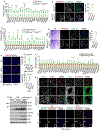
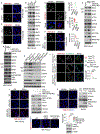
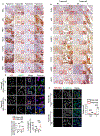
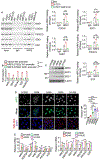
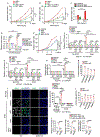
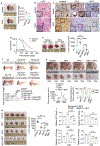
Comment in
-
Macropinocytosis: the big drinker behind cancer cell self-consumption.Autophagy. 2021 May;17(5):1290-1291. doi: 10.1080/15548627.2021.1919969. Epub 2021 Apr 27. Autophagy. 2021. PMID: 33879021 Free PMC article.
-
NRF2 activates macropinocytosis upon autophagy inhibition.Cancer Cell. 2021 May 10;39(5):596-598. doi: 10.1016/j.ccell.2021.03.011. Cancer Cell. 2021. PMID: 33974856
Similar articles
-
Macropinocytosis: the big drinker behind cancer cell self-consumption.Autophagy. 2021 May;17(5):1290-1291. doi: 10.1080/15548627.2021.1919969. Epub 2021 Apr 27. Autophagy. 2021. PMID: 33879021 Free PMC article.
-
NRF2 activates macropinocytosis upon autophagy inhibition.Cancer Cell. 2021 May 10;39(5):596-598. doi: 10.1016/j.ccell.2021.03.011. Cancer Cell. 2021. PMID: 33974856
-
p62/SQSTM1 protects against cisplatin-induced oxidative stress in kidneys by mediating the cross talk between autophagy and the Keap1-Nrf2 signalling pathway.Free Radic Res. 2019 Jul;53(7):800-814. doi: 10.1080/10715762.2019.1635251. Epub 2019 Jul 8. Free Radic Res. 2019. PMID: 31223046
-
Targets (Metabolic Mediators) of Therapeutic Importance in Pancreatic Ductal Adenocarcinoma.Int J Mol Sci. 2020 Nov 12;21(22):8502. doi: 10.3390/ijms21228502. Int J Mol Sci. 2020. PMID: 33198082 Free PMC article. Review.
-
p62 links autophagy and Nrf2 signaling.Free Radic Biol Med. 2015 Nov;88(Pt B):199-204. doi: 10.1016/j.freeradbiomed.2015.06.014. Epub 2015 Jun 24. Free Radic Biol Med. 2015. PMID: 26117325 Free PMC article. Review.
Cited by
-
Targeting the Metabolic Rewiring in Pancreatic Cancer and Its Tumor Microenvironment.Cancers (Basel). 2022 Sep 7;14(18):4351. doi: 10.3390/cancers14184351. Cancers (Basel). 2022. PMID: 36139512 Free PMC article. Review.
-
Crosstalk between cGAS-STING pathway and autophagy in cancer immunity.Front Immunol. 2023 Mar 1;14:1139595. doi: 10.3389/fimmu.2023.1139595. eCollection 2023. Front Immunol. 2023. PMID: 36936940 Free PMC article. Review.
-
The potential anti-arrhythmic effect of SGLT2 inhibitors.Cardiovasc Diabetol. 2024 Jul 15;23(1):252. doi: 10.1186/s12933-024-02312-0. Cardiovasc Diabetol. 2024. PMID: 39010053 Free PMC article. Review.
-
Macropinocytosis: the big drinker behind cancer cell self-consumption.Autophagy. 2021 May;17(5):1290-1291. doi: 10.1080/15548627.2021.1919969. Epub 2021 Apr 27. Autophagy. 2021. PMID: 33879021 Free PMC article.
-
Autophagy-Activated Self-reporting Photosensitizer Promoting Cell Mortality in Cancer Starvation Therapy.Adv Sci (Weinh). 2023 Jun;10(18):e2301295. doi: 10.1002/advs.202301295. Epub 2023 Apr 21. Adv Sci (Weinh). 2023. PMID: 37083241 Free PMC article.
References
-
- Bloomfield G, Kay RR, 2016. Uses and abuses of macropinocytosis. J. Cell Sci 129, 2697–2705. - PubMed
-
- Browning DJ, 2014. Pharmacology of Chloroquine and Hydroxychloroquine, in: Hydroxychloroquine and Chloroquine Retinopathy. Springer; New York, New York, NY, pp. 35–63.
-
- Bryant KL, Der CJ, 2019. Blocking autophagy to starve pancreatic cancer. Nat. Rev. Mol. Cell Biol 20, 265. - PubMed
Publication types
MeSH terms
Substances
Grants and funding
LinkOut - more resources
Full Text Sources
Other Literature Sources
Medical
Molecular Biology Databases

